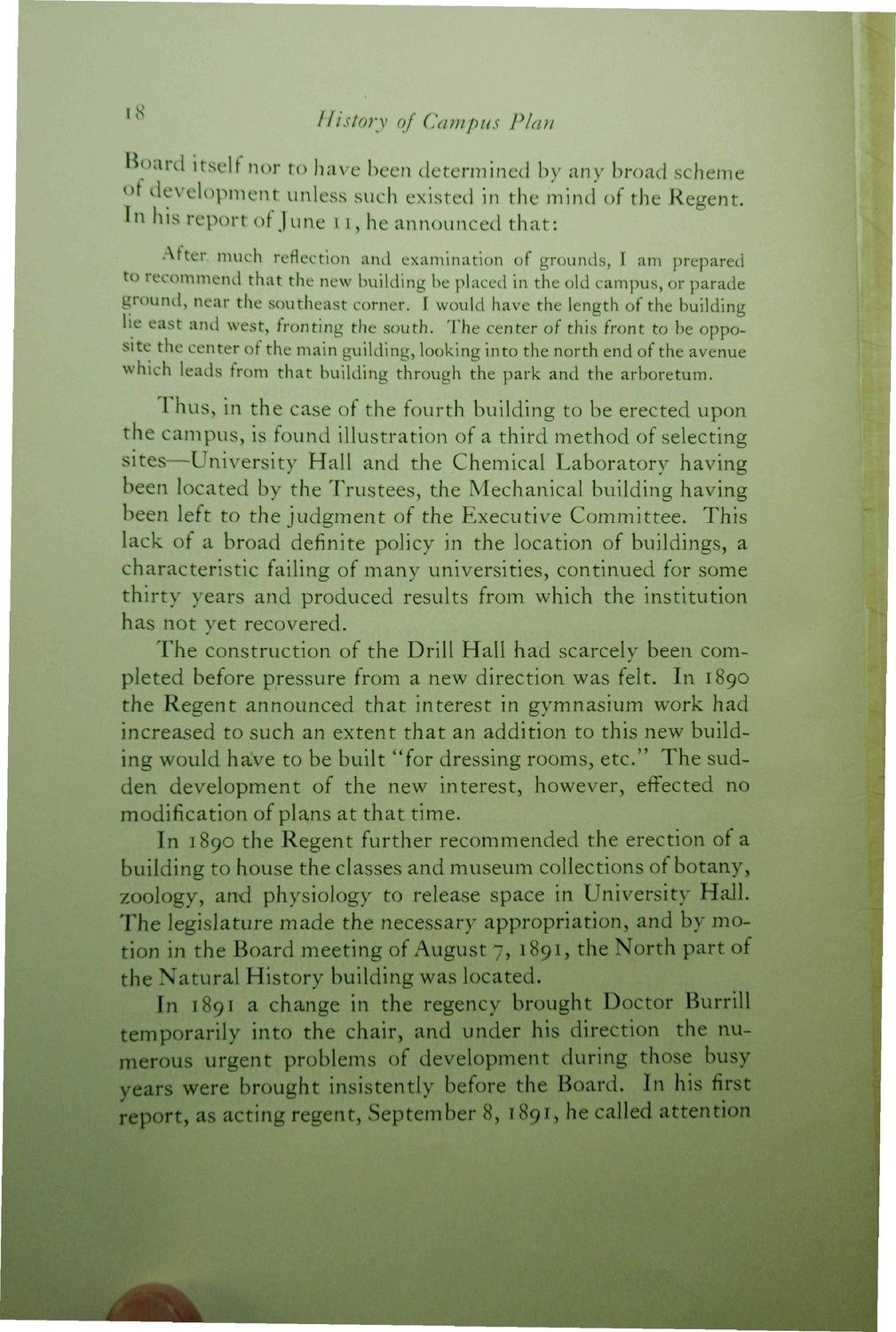| |
| |
Caption: Book - 30 Year Master Plan (Tilton & O'Donnell)
This is a reduced-resolution page image for fast online browsing.

EXTRACTED TEXT FROM PAGE:
History of Campus Plan Board itself nor to have been determined by any broad scheme of development unless such existed in the mind of the Regent. In his report of June 11, he announced that: After, much reflection and examination of grounds, I am prepared to recommend that the new building be placed in the old campus, or parade ground, near the southeast corner. I would have the length of the building lie east and west, fronting the south. The center of this front to be opposite the center of the main guilding, looking into the north end of the avenue which leads from that building through the park and the arboretum. Thus, in the case of the fourth building to be erected upon the campus, is found illustration of a third method of selecting sites—University Hall and the Chemical Laboratory having been located by the Trustees, the Mechanical building having been left to the judgment of the Executive Committee. This lack of a broad definite policy in the location of buildings, a characteristic failing of many universities, continued for some thirty years and produced results from which the institution has not yet recovered. The construction of the Drill Hall had scarcely been completed before pressure from a new direction was felt. In 1890 the Regent announced that interest in gymnasium work had increased to such an extent that an addition to this new building would haVe to be built "for dressing rooms, etc." The sudden development of the new interest, however, effected no modification of plans at that time. In 1890 the Regent further recommended the erection of a building to house the classes and museum collections of botany, zoology, and physiology to release space in University Hall. The legislature made the necessary appropriation, and by motion in the Board meeting of August 7, 1891, the North part of the Natural History building was located. In 1891 a change in the regency brought Doctor Burrill temporarily into the chair, and under his direction the numerous urgent problems of development during those busy years were brought insistently before the Board. In his first report, as acting regent, September 8,1891, he called attention
| |